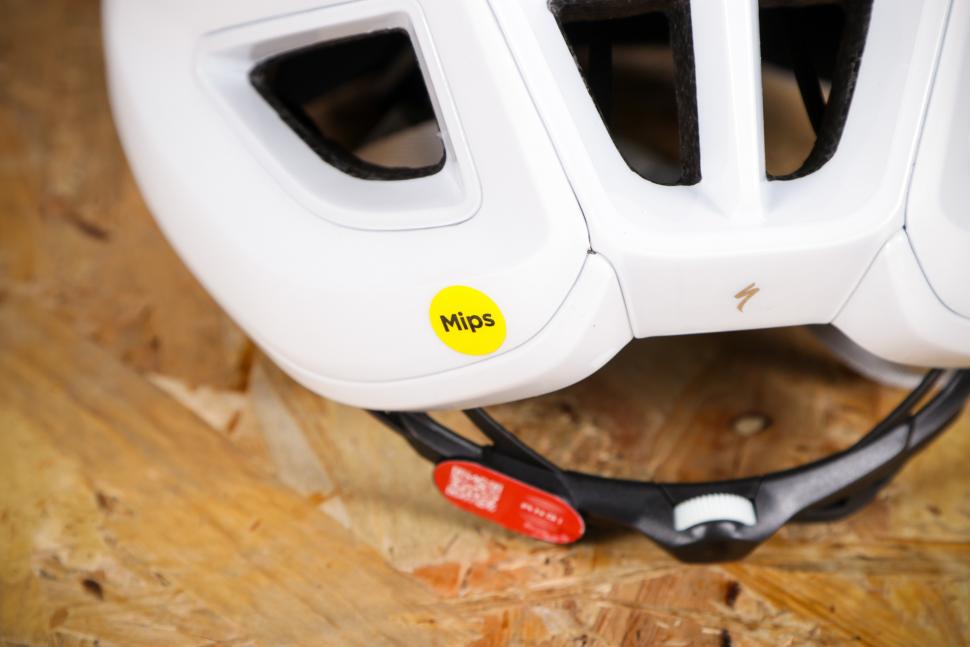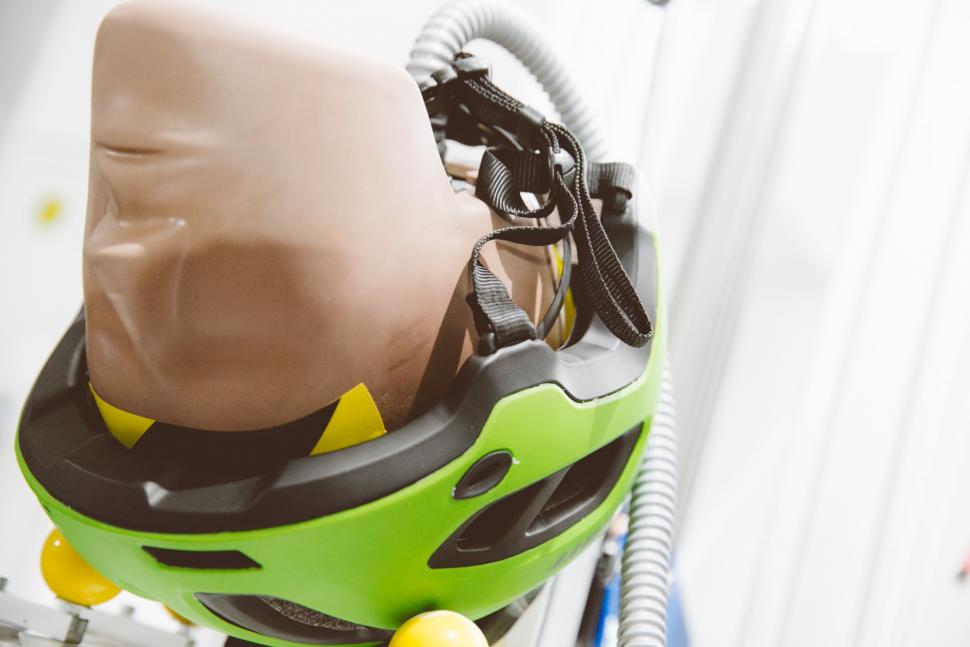- News
- Reviews
- Bikes
- Accessories
- Accessories - misc
- Computer mounts
- Bags
- Bar ends
- Bike bags & cases
- Bottle cages
- Bottles
- Cameras
- Car racks
- Child seats
- Computers
- Glasses
- GPS units
- Helmets
- Lights - front
- Lights - rear
- Lights - sets
- Locks
- Mirrors
- Mudguards
- Racks
- Pumps & CO2 inflators
- Puncture kits
- Reflectives
- Smart watches
- Stands and racks
- Trailers
- Clothing
- Components
- Bar tape & grips
- Bottom brackets
- Brake & gear cables
- Brake & STI levers
- Brake pads & spares
- Brakes
- Cassettes & freewheels
- Chains
- Chainsets & chainrings
- Derailleurs - front
- Derailleurs - rear
- Forks
- Gear levers & shifters
- Groupsets
- Handlebars & extensions
- Headsets
- Hubs
- Inner tubes
- Pedals
- Quick releases & skewers
- Saddles
- Seatposts
- Stems
- Wheels
- Tyres
- Health, fitness and nutrition
- Tools and workshop
- Miscellaneous
- Cross country mountain bikes
- Tubeless valves
- Buyers Guides
- Features
- Forum
- Recommends
- Podcast
TECH NEWS
 2022 S-Works Prevail 3 helmet - Mips logo.jpg
2022 S-Works Prevail 3 helmet - Mips logo.jpgMips comes out fighting in helmet safety debate
Mips (Multi-directional Impact Protection System) has defended the efficacy of its helmet safety system, saying that its test methods meet the highest scientific standards and that its results are based on the most realistic head form currently available. Mips says that results from two of the key head forms used in helmet safety testing both show its system to be effective in protecting against brain injury and, in a reference to Kask, it says “any reference to WG11 as a self-contained test method for rotational motion is false and misleading”.
This has been prompted by Kask stepping up the profile of its internal Rotational Impact WG11 Test. As we reported last week, the Italian helmet brand rejects the need for the inclusion of a proprietary technology like Mips to offer protection against rotational impacts. WG11 is a working group of the European Committee for Standardization (CEN) that advocates for improved helmet testing methods, but it isn't involved in Kask's testing.
Kask says, “Kask Rotational Impact WG11 Test is an internal protocol adopted by Kask to identify an objective method, based on scientific sources, for measuring the performance of its helmets against rotational impacts.”
Kask does its helmet testing using the EN960 head form which it believes to be the most biofidelic (meaning that it behaves most like a human head) while Mips prefers to use a head form called Hybrid III.
“The Hybrid III head form, which Mips has been using in its helmet tests, has a higher coefficient of friction [CoF] than the EN960 head form, meaning it’s less likely to slide past another surface easily,” says Mips. “A helmet with Mips technology does not stop working if the CoF is low. In comparison studies, our testing data shows that this difference in CoF does not correlate with a decrease in the efficacy of the Mips system.
“Mips conducted in-house tests with a generic bike helmet in which the helmet and head form were dropped at a speed of 6.2 meters per second against a 45° anvil covered with sandpaper. We used the same helmet model with and without the Mips system, comparing the reduction in the Peak Linear Acceleration (PLA), Peak Rotational Acceleration (PRA), Peak Rotational Velocity (PRV), and the Brain Injury Criteria (BrIC) value – where PLA, PRA, PRV and BrIC all describe the forces and energy a Mips system is designed to help reduce.”
As Mips says, this is internal rather than independent testing. The values can be seen in this table.
“The results show clearly that helmets with and without the Mips system have similar reductions using the Hybrid III head form compared with the EN960 head form. The Mips system has also been evaluated in external studies where the CoF has been reduced in comparison to the Hybrid III head form.
“Mips’ position, after years of scientific research, is that the Hybrid III head form more closely mimics the human head than the EN960, despite the difference in CoF. There are other features, like the moment of inertia, overall mass, and the compliance of the skin that influence a head form’s ability to best mimic the human head and its behaviour in an impact.”
Mips says that it is committed to the use of a new head form being developed by WG11, a working group of the European Committee for Standardization (CEN), once work is complete. WG11 comprises individuals from helmet brands and diverse academic backgrounds in Europe and advocates for improved helmet testing methods.
“At Mips, we believe that we need to take the next step beyond the EN960 head form, which was developed more than 40 years ago purely for linear impact tests. When WG11 was convened, the EN960 head form was not considered to be the best representation of the human head, especially in testing for rotational motion.
“At that time, the Hybrid III head form was the best candidate, but the need for additional advancements in head forms was clear. The WG11 has since decided to develop a new head form to take all aspects into account, including, mass, moment of inertia, centrum of gravity, shape, the influence of the neck, and CoF.
> Find out all you need to know about MIPS
“Mips’ test methods are constantly improving based on new scientific data and understanding of real-life accident scenarios. We are also part of and influenced by the important work being done by WG11 and other standardisation groups in Europe and USA. That’s part of the reason we established our technology on the Hybrid III head form and why we will start using the new WG11 head form as soon as it's ready.”
Mips has also taken a swipe at the Kask’s use of ‘WG11’ in the name of its internal test protocol: Kask Rotational Impact WG11 Test.
“We want to be clear that any reference to WG11 as a self-contained test method for rotational motion is false and misleading,” says Mips. “WG11 is not an established test method, nor is it an established test standard, nor does it have a logo for use in the market, regardless of its appearance on helmets.”
Although it’s not obvious from the logos used on its helmets, Kask does explain on its website that WG11 refers to an internal protocol rather than anything bestowed by an external body.
Mat has been in cycling media since 1996, on titles including BikeRadar, Total Bike, Total Mountain Bike, What Mountain Bike and Mountain Biking UK, and he has been editor of 220 Triathlon and Cycling Plus. Mat has been road.cc technical editor for over a decade, testing bikes, fettling the latest kit, and trying out the most up-to-the-minute clothing. He has won his category in Ironman UK 70.3 and finished on the podium in both marathons he has run. Mat is a Cambridge graduate who did a post-grad in magazine journalism, and he is a winner of the Cycling Media Award for Specialist Online Writer. Now over 50, he's riding road and gravel bikes most days for fun and fitness rather than training for competitions.
Latest Comments
- matthewn5 1 hour 14 min ago
Ellis Briggs do a proper job. https://www.ellisbriggscycles.co.uk/resprays/
- matthewn5 1 hour 36 min ago
The ugliness is the dealbreaker for me.
- Simon E 1 hour 54 min ago
I'd put in a nomination for the Cateye Viz range....
- Generally speaking 1 hour 55 min ago
It's true I cycle everyday but I've never contributed anything to Maidenhead, admittedly it's 113 miles away and a bit out of my way just to nip to...
- chrisonabike 2 hours 51 min ago
I think mdavidford had the most likely view on (2) - on (1) I guess we'll find out if anyone wants to donate to the lawyers and actually try to see...
- Velophaart_95 4 hours 43 min ago
The UCI sell their Worlds as a package; so the BBC can show Road, Track, MTB, Cyclocross, etc ...
- eburtthebike 6 hours 53 min ago
I well remember the BBC rolling out their environment correspondent to criticise LTNs.
- Terry Hutt 13 hours 4 min ago
Those models aren't miserable etc. They're hungry.
- Bungle_52 20 hours 11 min ago
This was a failure to give way at a roundabout so although it was relatively straightforward to anticipate and avoid there is traffic law to...




Add new comment
5 comments
Is this article also available in English?
Shouldnt this read "MIPS comes rushing out for the free publicity surrounding the faux helmet safety debate?"
Probably not, no.
Not really, MIPS seems to be on our side, helping cyclists to survive falls and collisions, rather than making marketing and fashion statememnts.
Really? I'd have to disagree given that talking about protecting from rotational impacts is irrelevant when the helmet in question has barely any more protective ability than Charlie Browns melon.
The main test and everything based on it is a joke.
NTA 8776 Is a start in the right direction